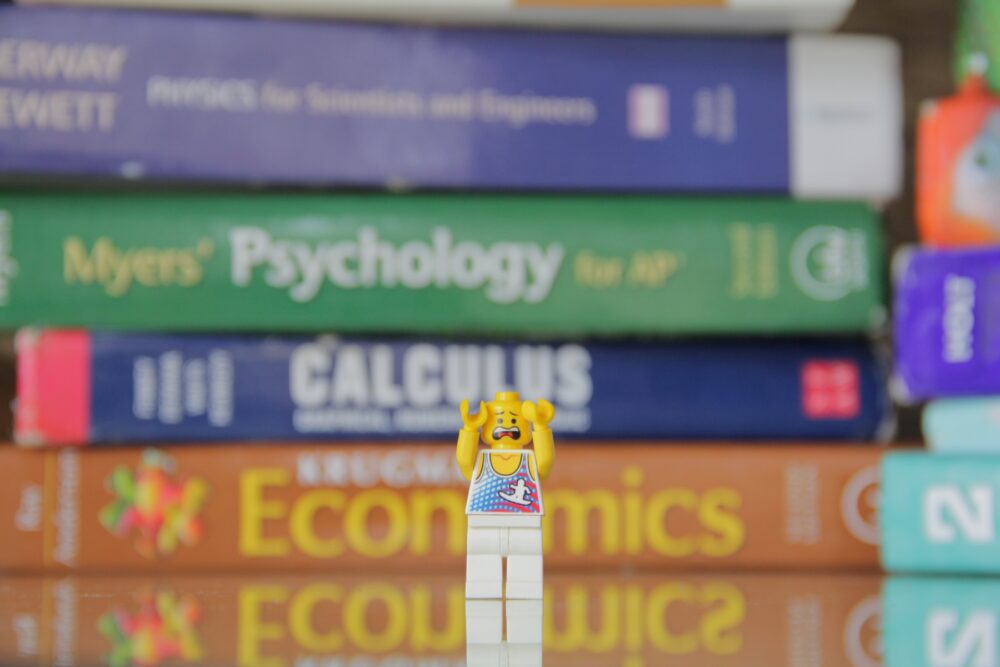
By Arden Nguyen
Around the nation, the transition to distance learning hasn’t been smooth.
Teachers and students alike are struggling to adapt to virtual classrooms. The mental health of teenagers has been negatively impacted as a result of the pandemic and other stress-inducing factors.
So, in a school year that is anything but normal, why assign a normal amount of work?
In an email sent through ParentSquare before the end of the first semester, Fountain Valley High School principal Dr. Morgan Smith noted that students were “potentially looking at failing grades or in danger of failing a class.”
Furthermore, the results of a student check-in survey revealed how students’ work habits have been affected.
In the survey, students were asked various questions about distance and hybrid learning on a scale of one to five, with one being “not well at all” and five being “very well.” When asked to what extent they were able to organize their work, complete and submit assignments on time, a common response from students who answered with a three or below was that there were “too many assignments and not enough time.” Other reasons they cited were “frustration with online/distance learning” and “no self-motivation.”
Of the 2,089 students who participated in the survey, 32.2% have important obligations outside of school, such as working or taking care of younger siblings, because of the pandemic. This leaves less time to complete assignments. Others are experiencing problems with sleep and stress due to distance learning.
It is clear that these common issues have led to students feeling overwhelmed.
Now that the first semester is over, we are all starting over with a clean slate. Seeing as the district chose to assign traditional letter grades rather than using a pass/fail system, a reduced workload is the next best thing that can help us catch up and improve our academic performance in the second semester.
Any homework that teachers do assign should not be busywork, unreasonably lengthy or too difficult to complete independently. Instead, assignments should be manageable and reflect what students have learned in class.
A 2013 study conducted by Stanford education researcher Denise Pope found that excessive homework resulted in increased stress, was harmful to students’ health and left less time to spend with loved ones or do other activities. Pope noted that busy work “discourages learning” and that the purpose of homework should be “to cultivate learning and development.”
Another option for teachers would be to give out more creative and interesting assignments. For example, if students have primarily been doing textbook work so far, why not assign a video project? Variability may be more likely to keep students engaged in the learning process.
It’s true that Advanced Placement courses and other rigorous classes require more work because students have to practice essential skills and have limited time to learn a substantial amount of material. But teachers can still help students in other ways, such as giving them chances to do test corrections or extending due dates for assignments.
I raised my low grade in math in large part because my teacher allowed us to turn in test corrections. In another class, my teacher passed many failing students because she allowed them to turn in work that had been due long before. It was flexible methods like these that made my experience with distance learning and that of my classmates much smoother.
But one can’t possibly expect these accommodations to appear out of thin air. After all, we students have a responsibility too. This is a two-way street, and adequate communication with our teachers is key if we want to see a change in the amount of work assigned.
Yet, according to the student check-in survey, 62.4% of respondents answered with a three or less when asked how comfortable they felt reaching out to staff members if they needed help. If fear or anxiety is what is standing in their way, teachers should take this into account and encourage students to talk to them and let them know that they are open to feedback.
The bottom line is, if students and teachers work together, there can be more flexibility and patience regarding workload. As we all learn to navigate this unusual school year, there is no doubt that a little understanding would be appreciated both ways.





